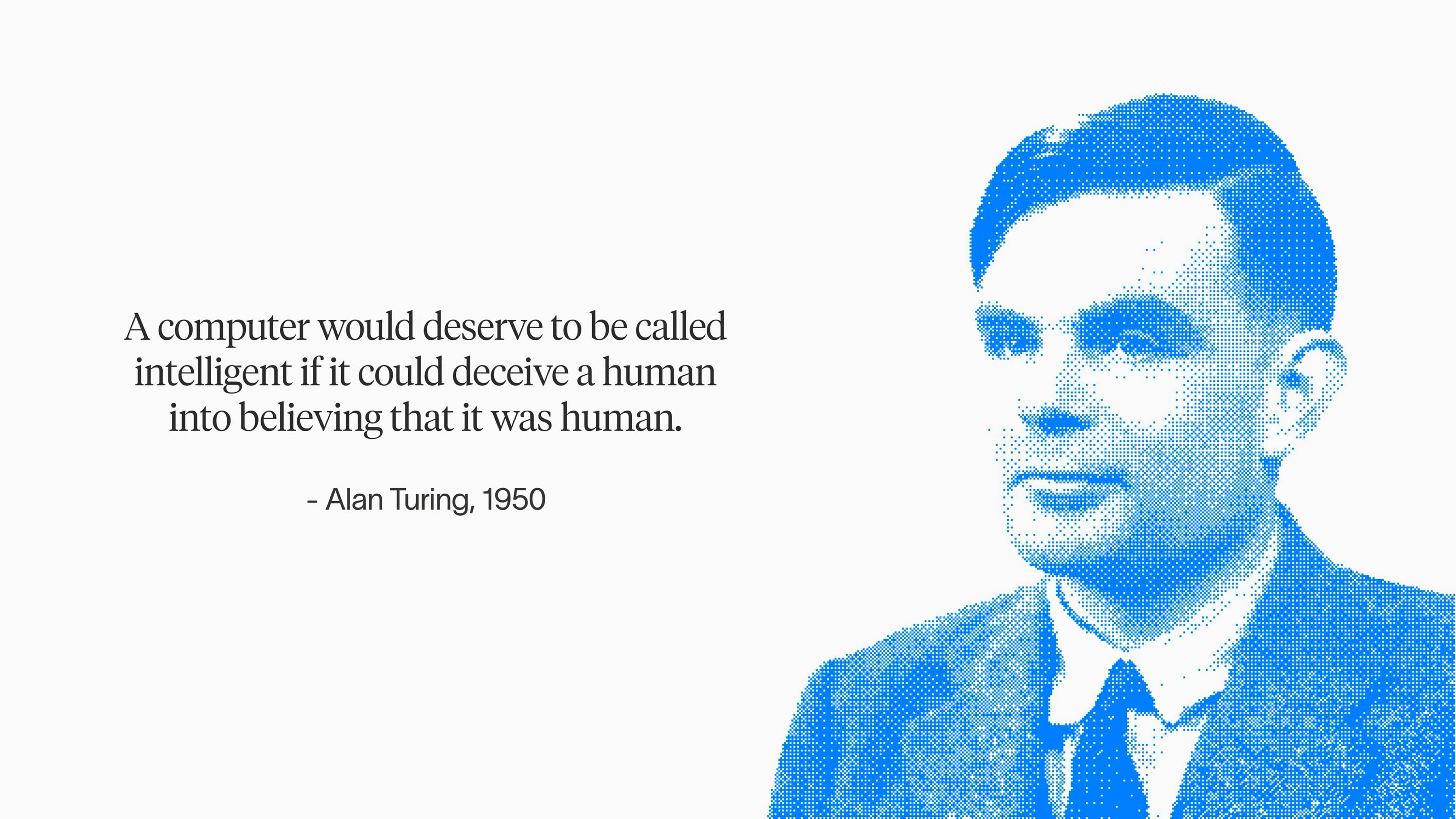
Turing asked if machines could think. Now, we ask, can humans prove they’re human?
In October 1950, Alan Turing posed a simple question: Could a machine successfully imitate a human in conversation? His proposed test, the Turing Test, became one of computer science's most enduring thought experiments.
Seventy-five years later, we've arrived at an inflection point where machines can pass as humans online. Today's AI systems generate photorealistic content with the click of a button, clone voices with uncanny precision, solve captchas with ease, and complete complex problems across virtually every domain of human knowledge.
This evolution begs the question: In a world where machines can convincingly present as human across every digital medium, how do we preserve spaces for authentic human interaction?
Beyond imitation
The irony is striking. Turing's test measured machine intelligence by its ability to imitate behaviors equivalent to, or indistinguishable from, humans. Today, the benchmark reshapes digital interaction and presents a new challenge: humans now need to prove their humanness online.
This shift reveals something profound about our digital evolution. We've moved from asking "Can machines be like us?" to "How can we remain distinguishable from machines?" The question touches everything from competitive gaming—where AI will soon outperform elite players—to online dating, where the person behind the profile might be lines of code.
The evolution of the test
This evolution was underscored in a recent conversation between World co-founder Sam Altman and physicist David Deutsch. They proposed that true AGI should solve fundamental mysteries like quantum gravity, but more importantly, explain why the solution works. The benchmark has shifted from simple imitation to profound understanding, from passing as human to surpassing human cognitive limits.
This very advancement makes the current challenge more urgent. As Deutsch noted, we've moved beyond asking whether AI can deceive us in conversation. The question now is how we maintain human authenticity across every digital interaction.
The challenge is monumental. Solutions must be global in scale, resistant to advances in AI, accessible to billions and prioritize openness. They must work for everyone, everywhere, regardless of access to government-issued IDs or high-speed internet. Most critically, they must evolve as quickly as the AI systems they seek to differentiate from.
The real human network emerges
This challenge has sparked a new generation of builders who see Turing's legacy as a call to action, including World. Rather than asking machines to prove they can think, World creates a global proof of human system. In this network, every participant's humanness is cryptographically verified, explicitly designed for the age of AI.
The approach is both audacious and necessary. World enables billions of people to assert their humanness in digital spaces while maintaining complete privacy and anonymity.
A new kind of test
The most fitting tribute to Turing's legacy is to embrace the evolution taking place before our eyes. Just as he imagined machines competing with humans in all intellectual fields, we must now imagine systems that ensure human agency remains paramount as that competition intensifies.
The next 75 years will focus on ensuring that being human continues to matter in a world where the distinction has become harder to prove than Turing ever imagined. His test asked whether machines could think. Our test asks how we remain verifiably human in their presence.
Learn More
To stay informed on the latest from World, along with other exciting news and announcements, visit the World website or subscribe to the blog below.
You can also join the daily conversation on all World social media channels, or get additional important information concerning the project by reading the World protocol whitepaper.